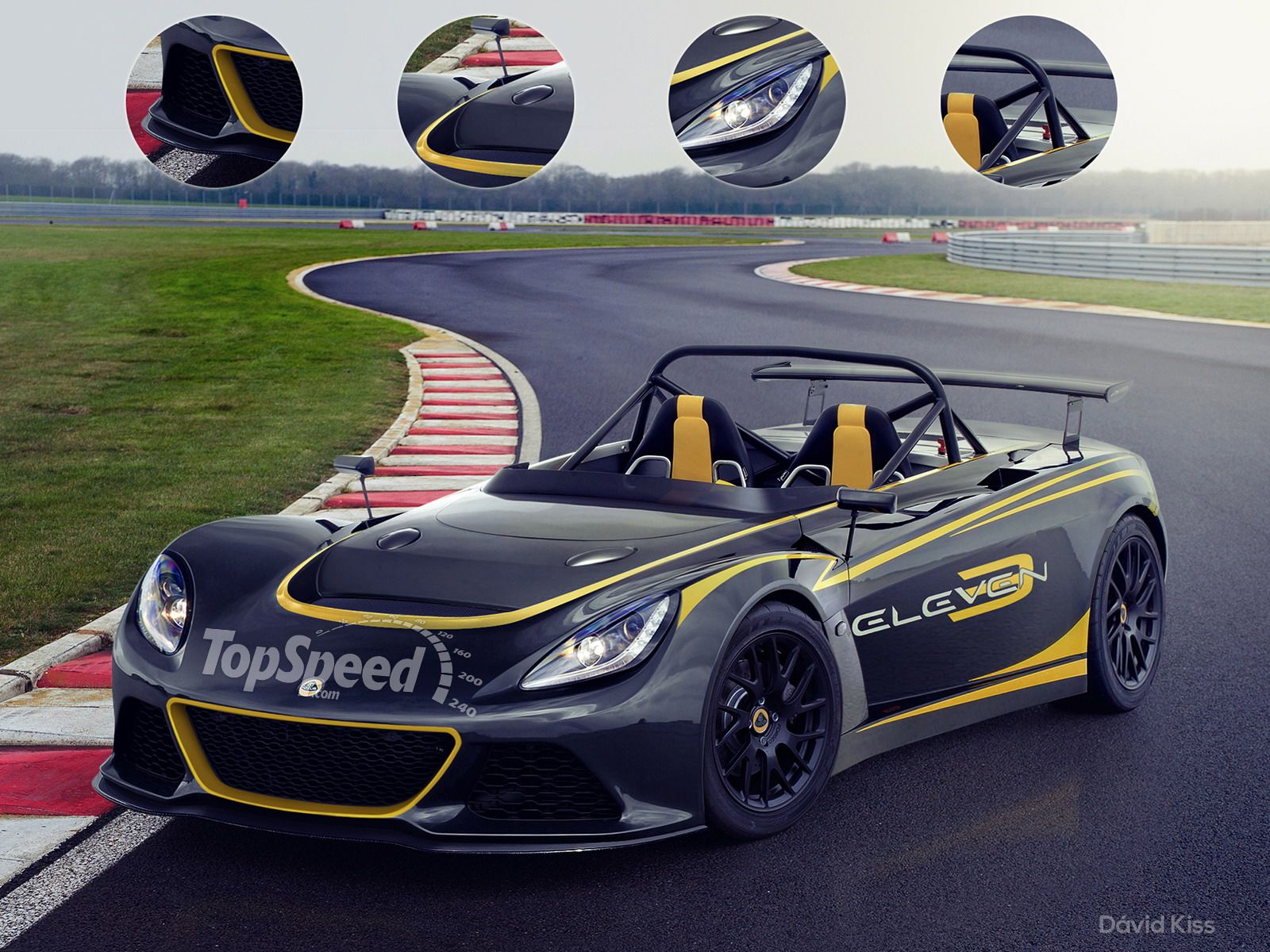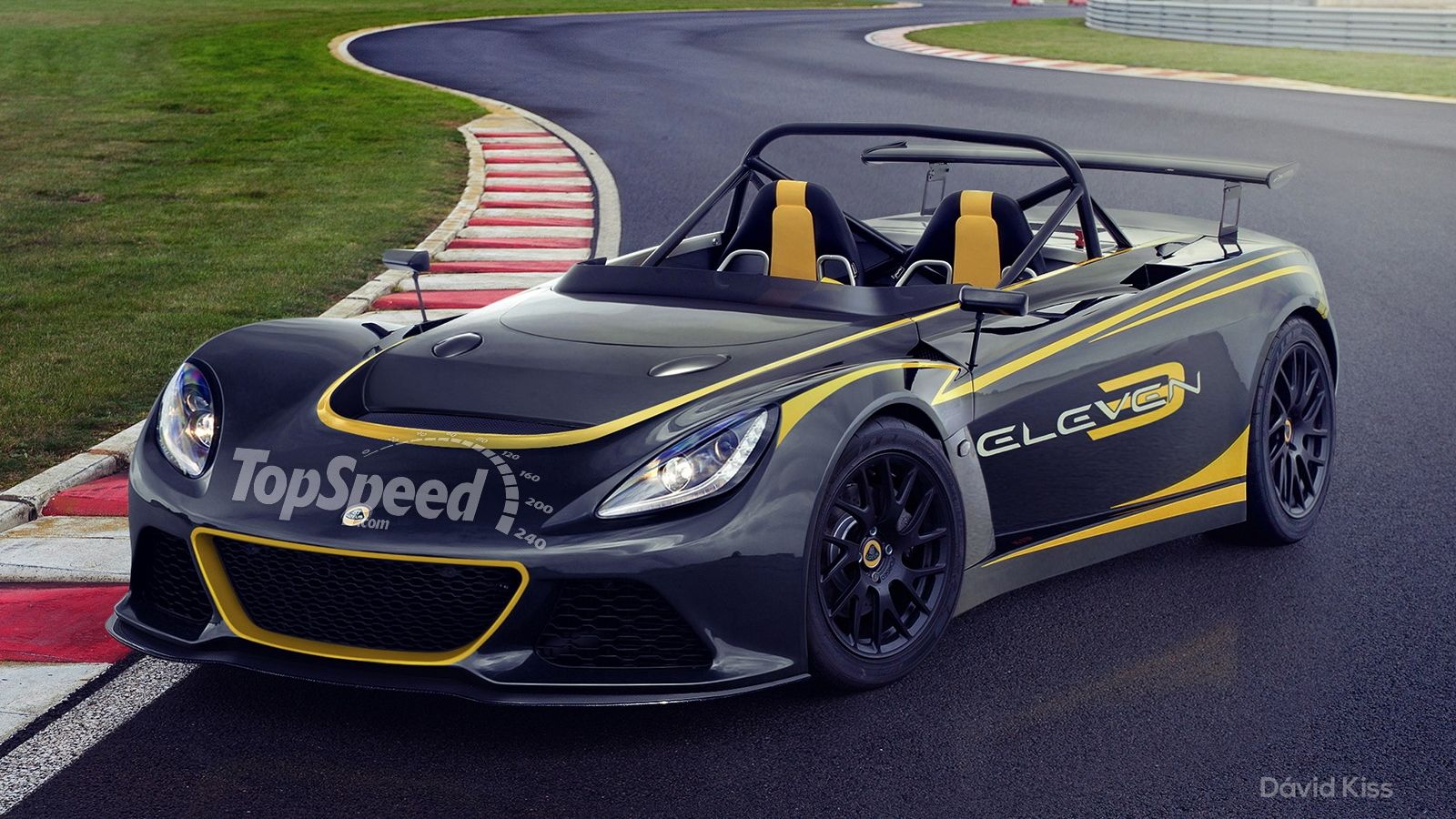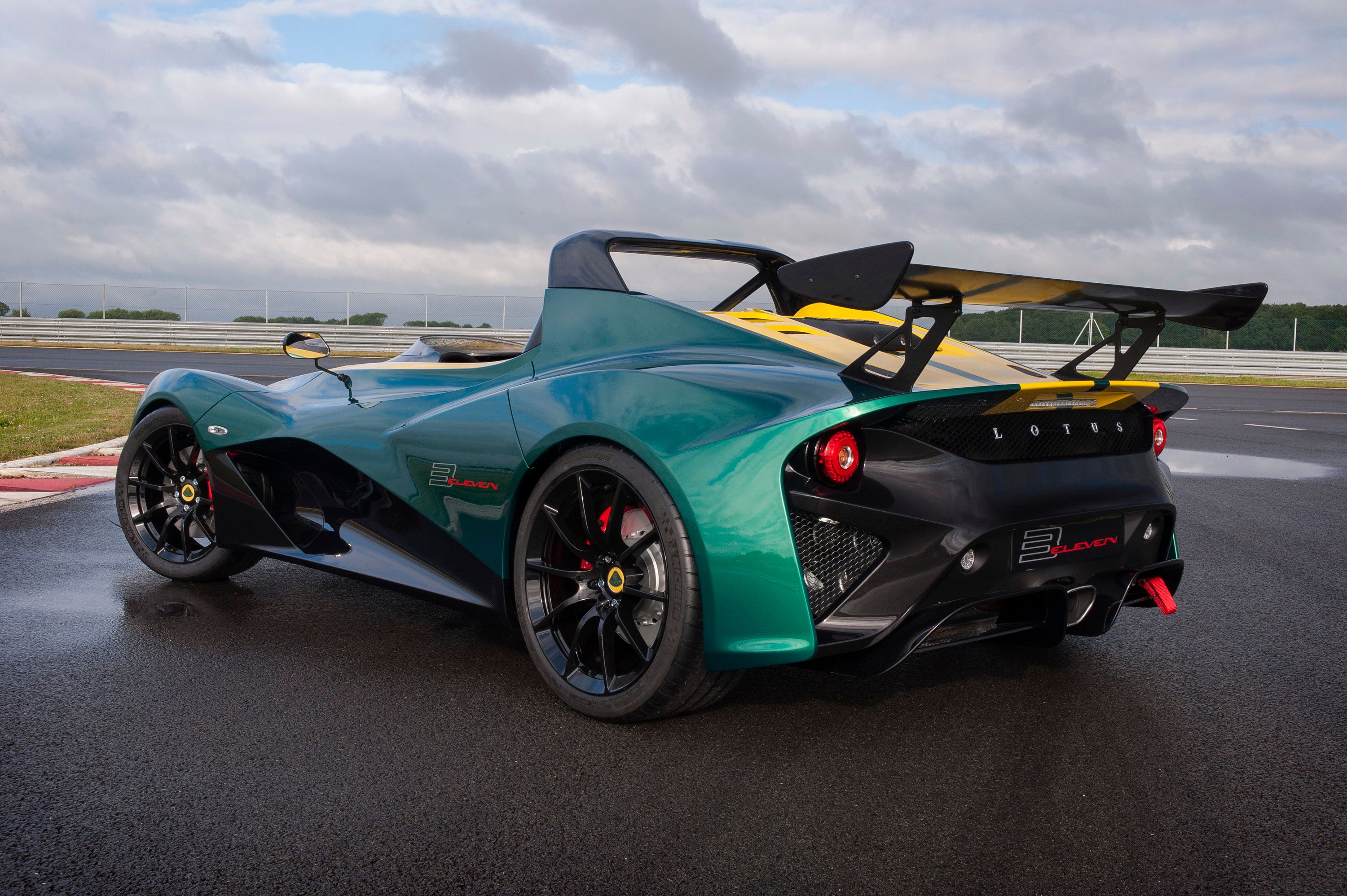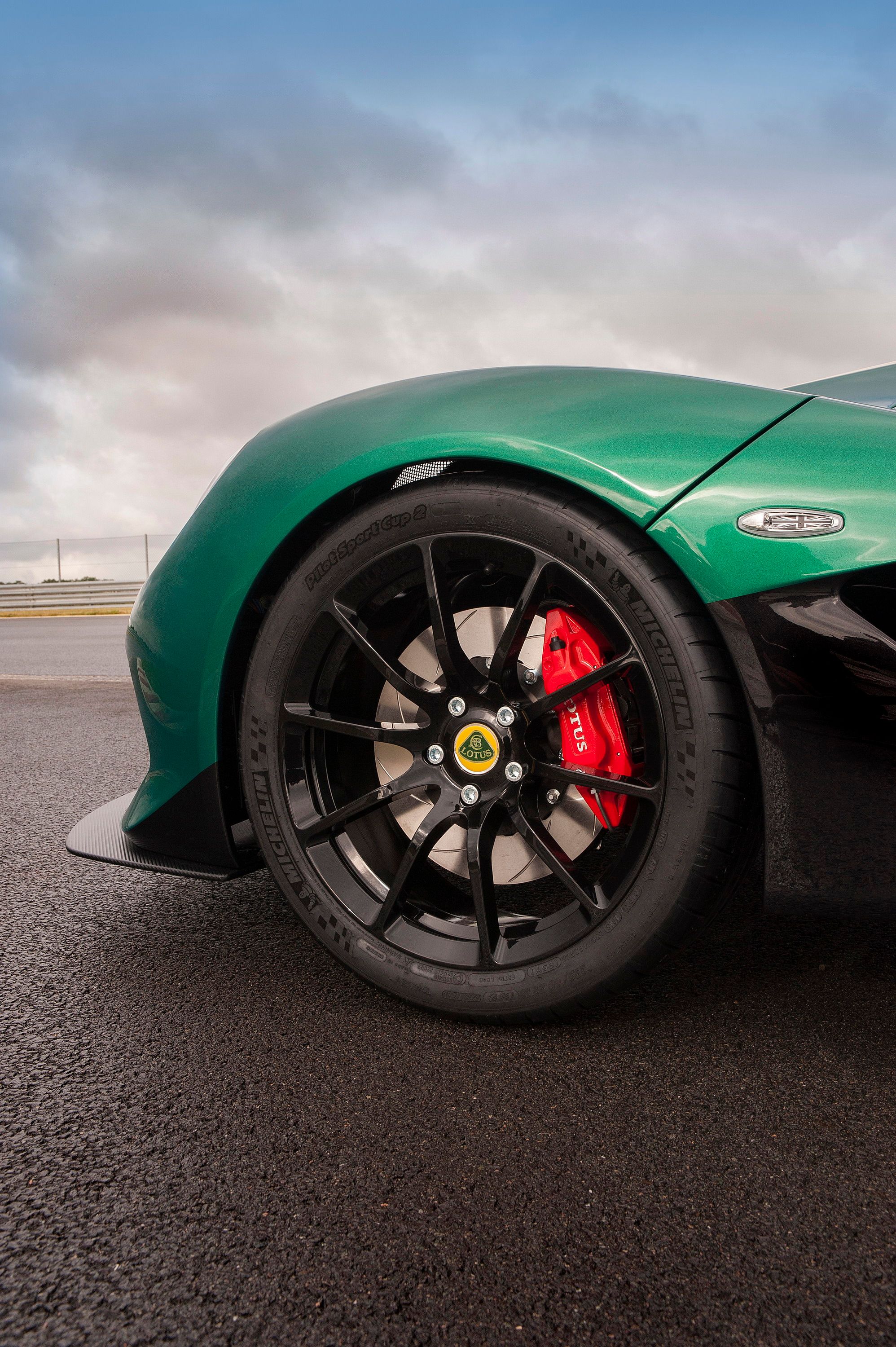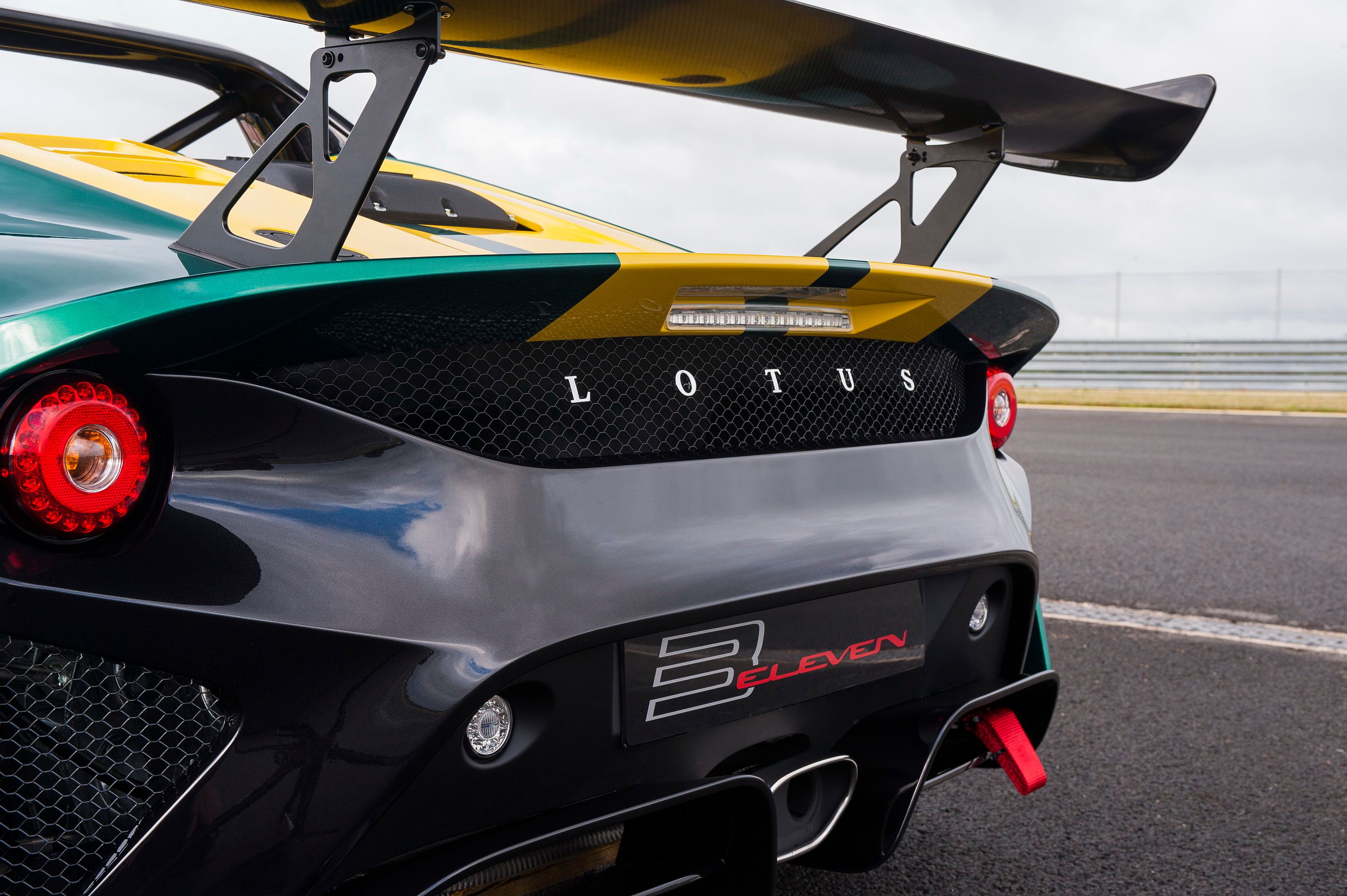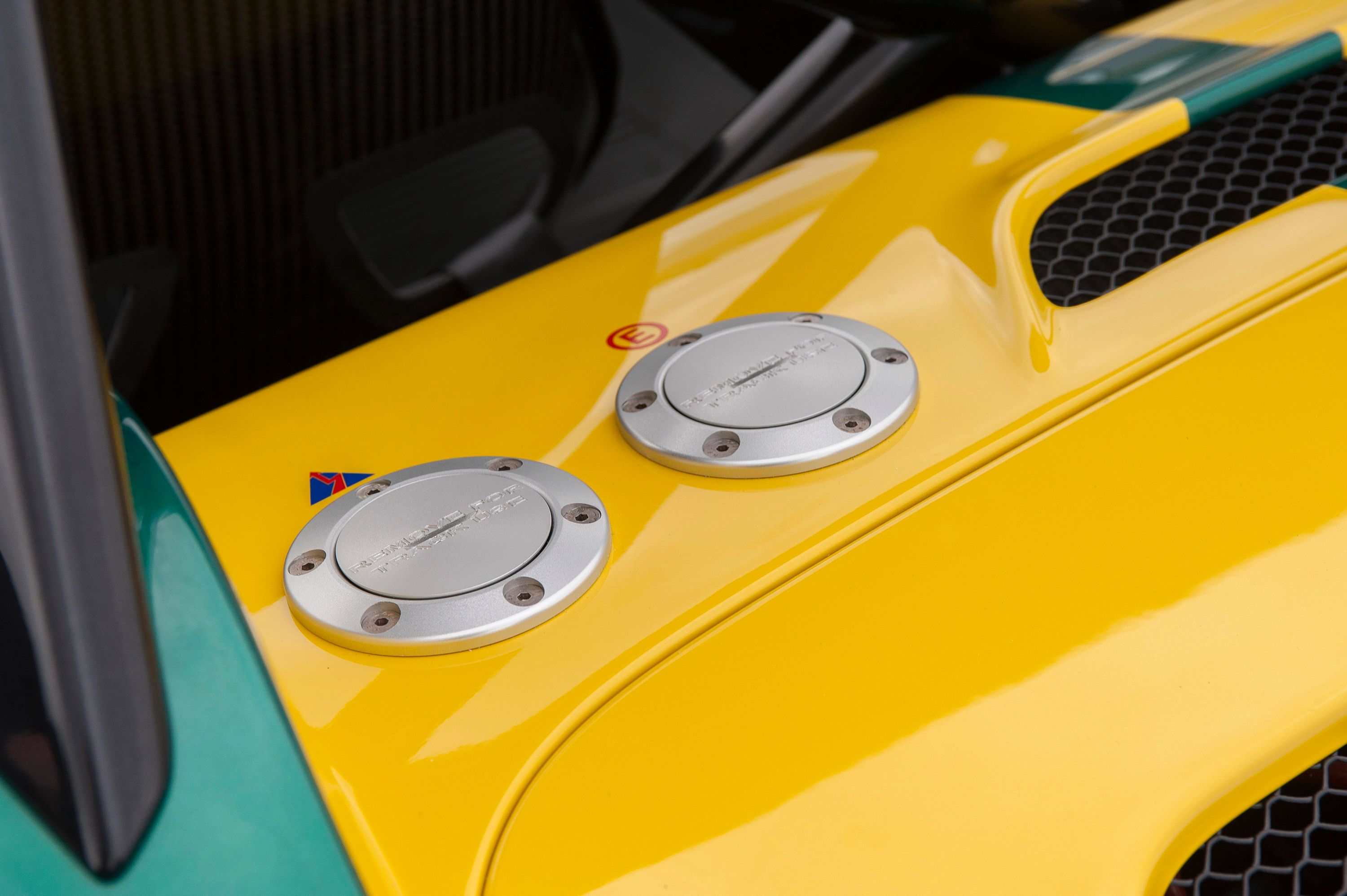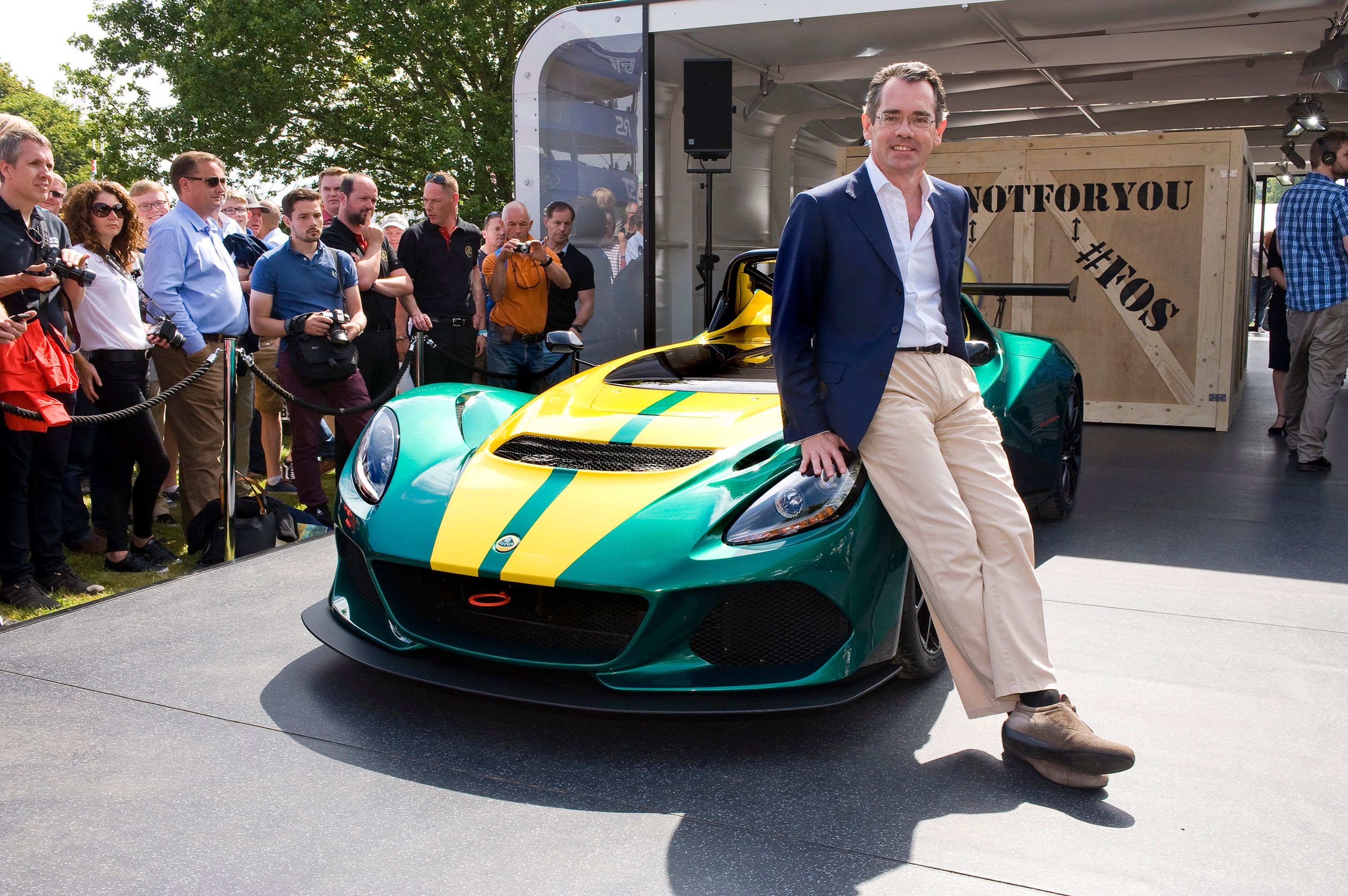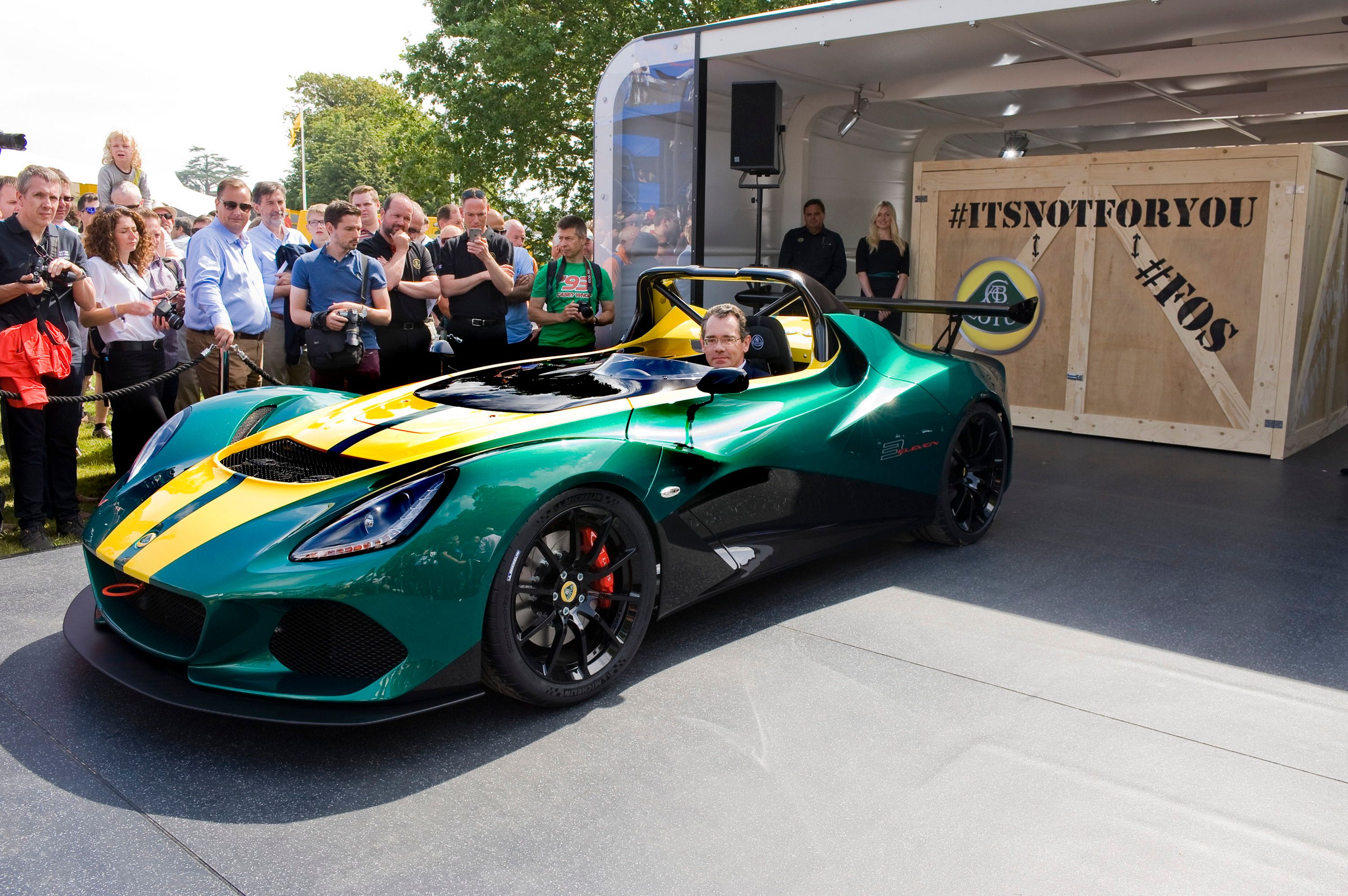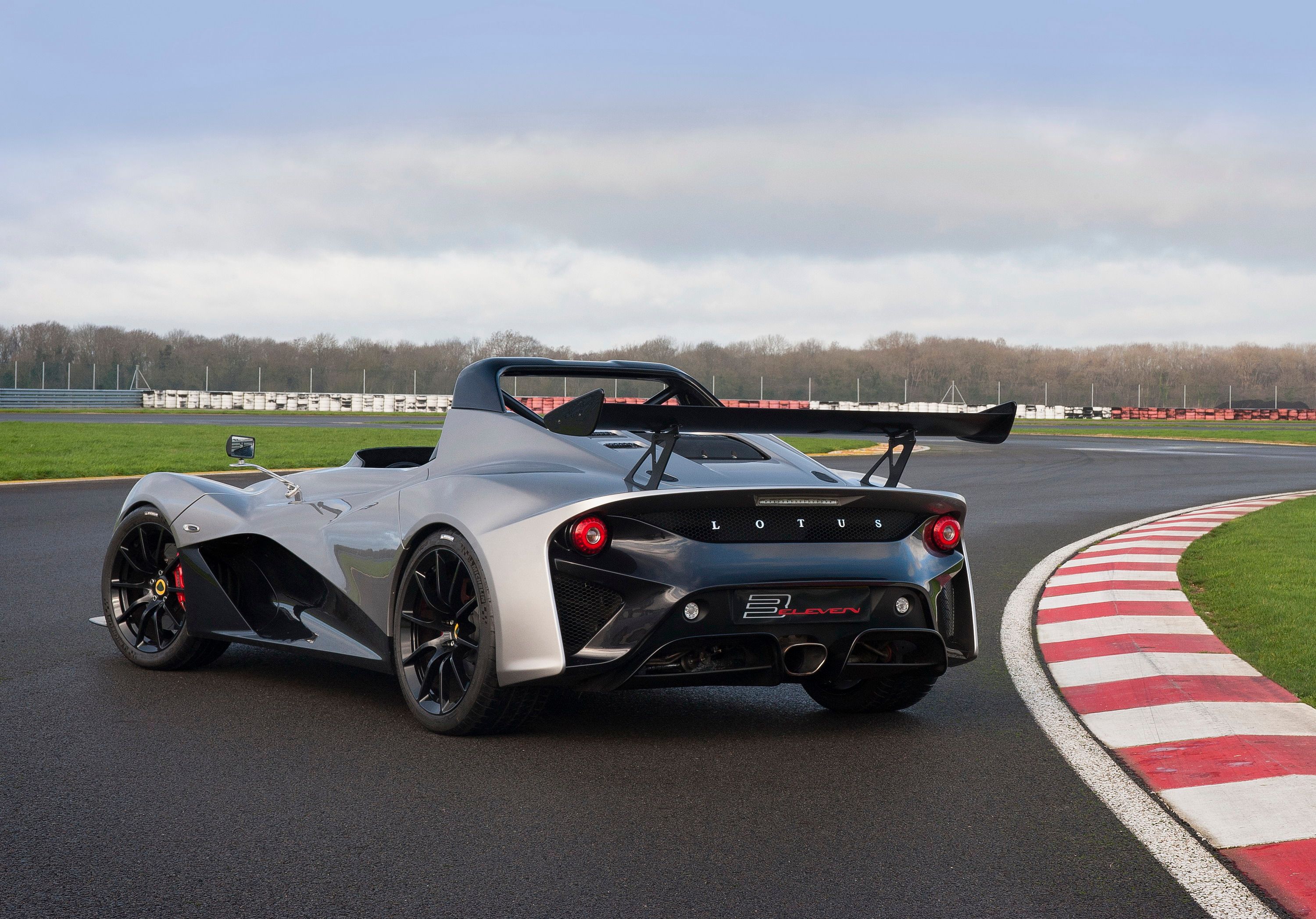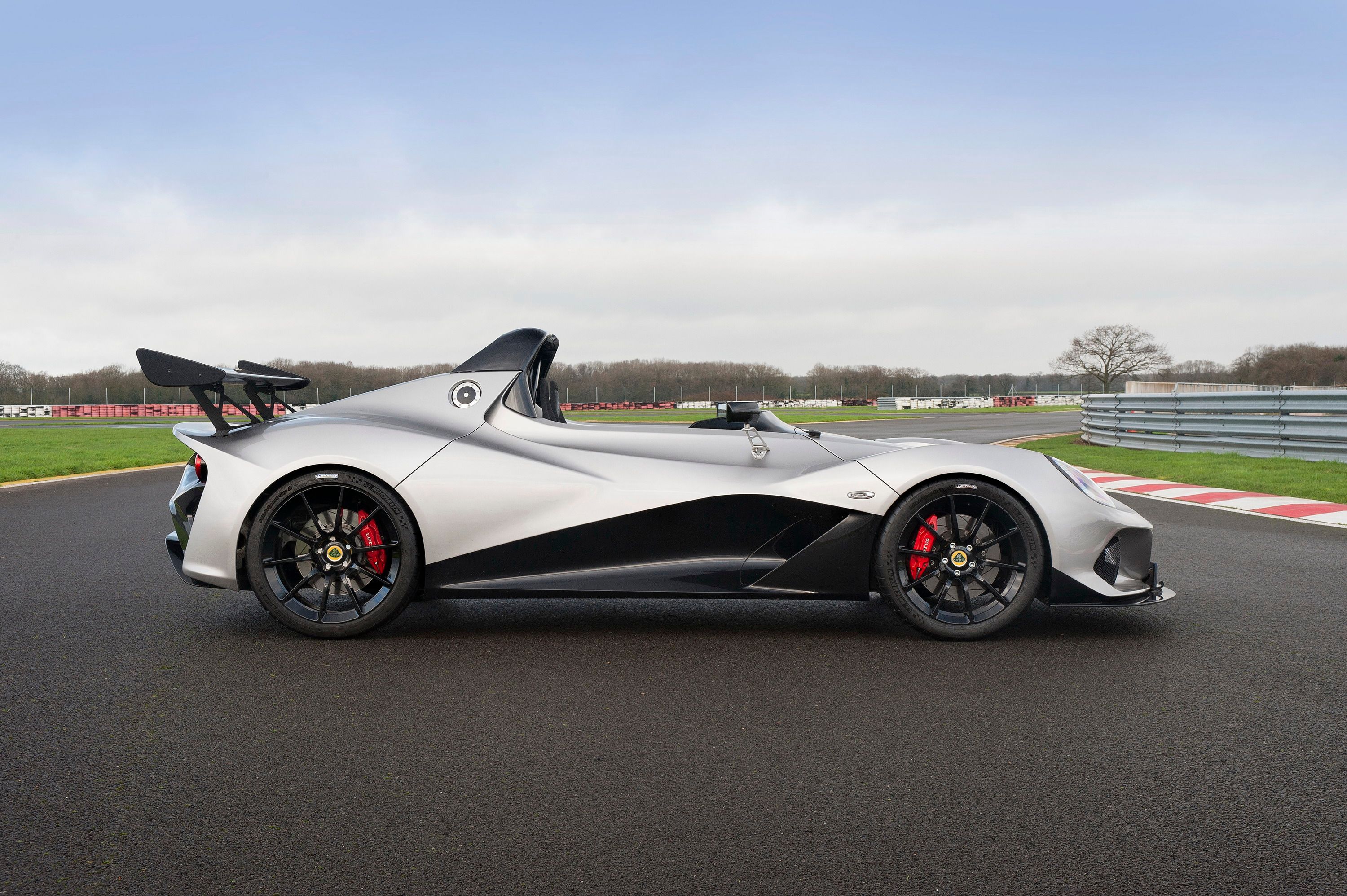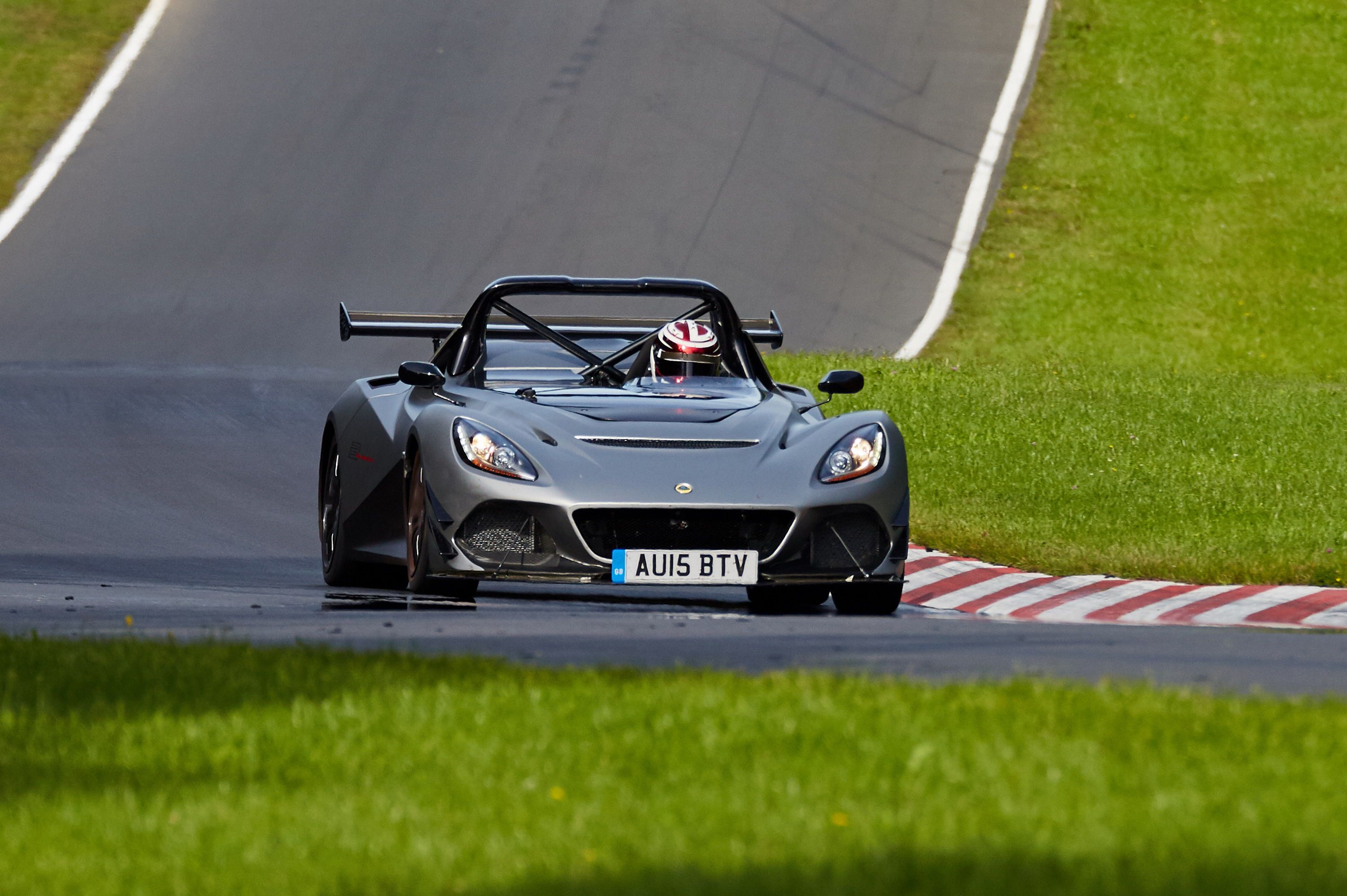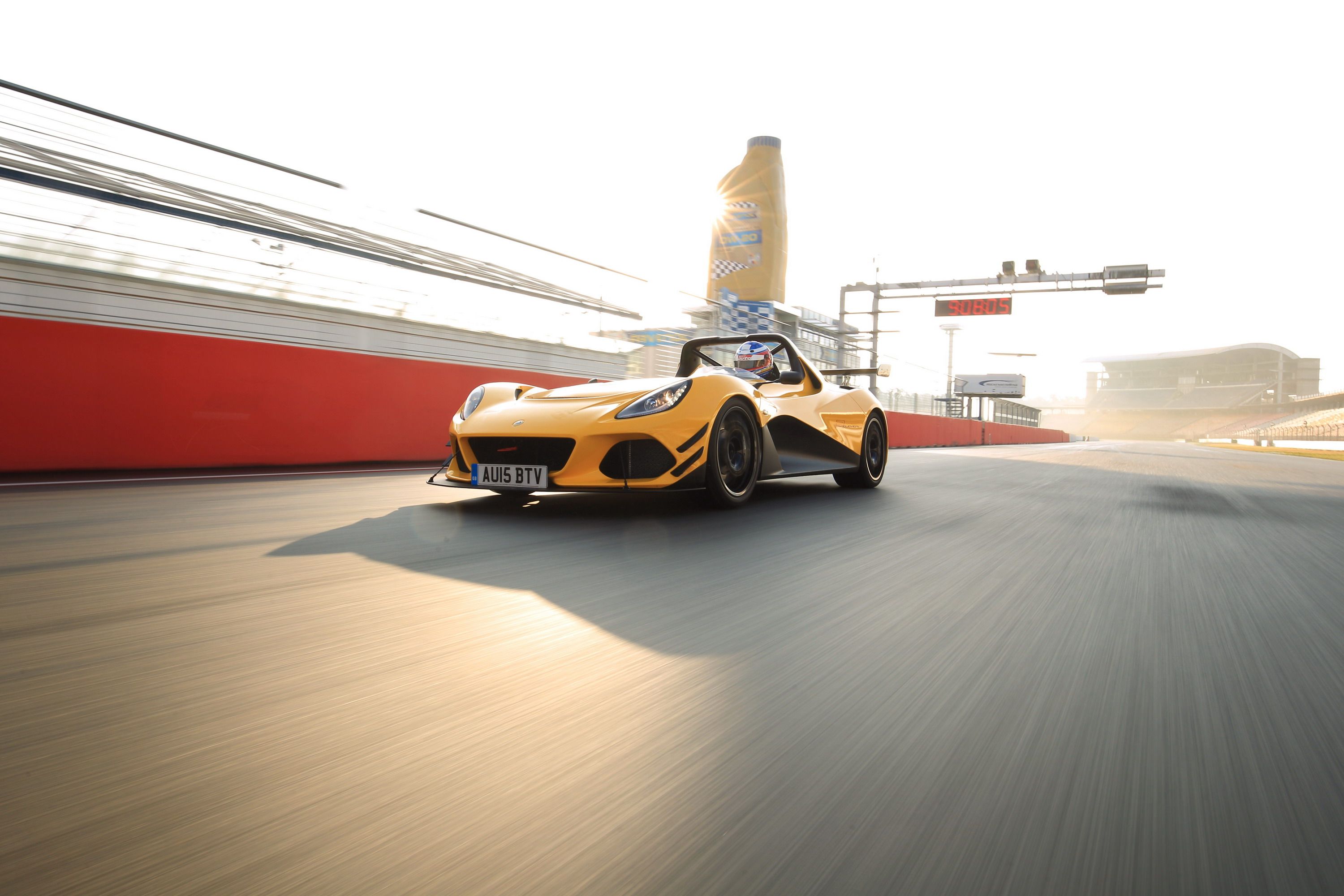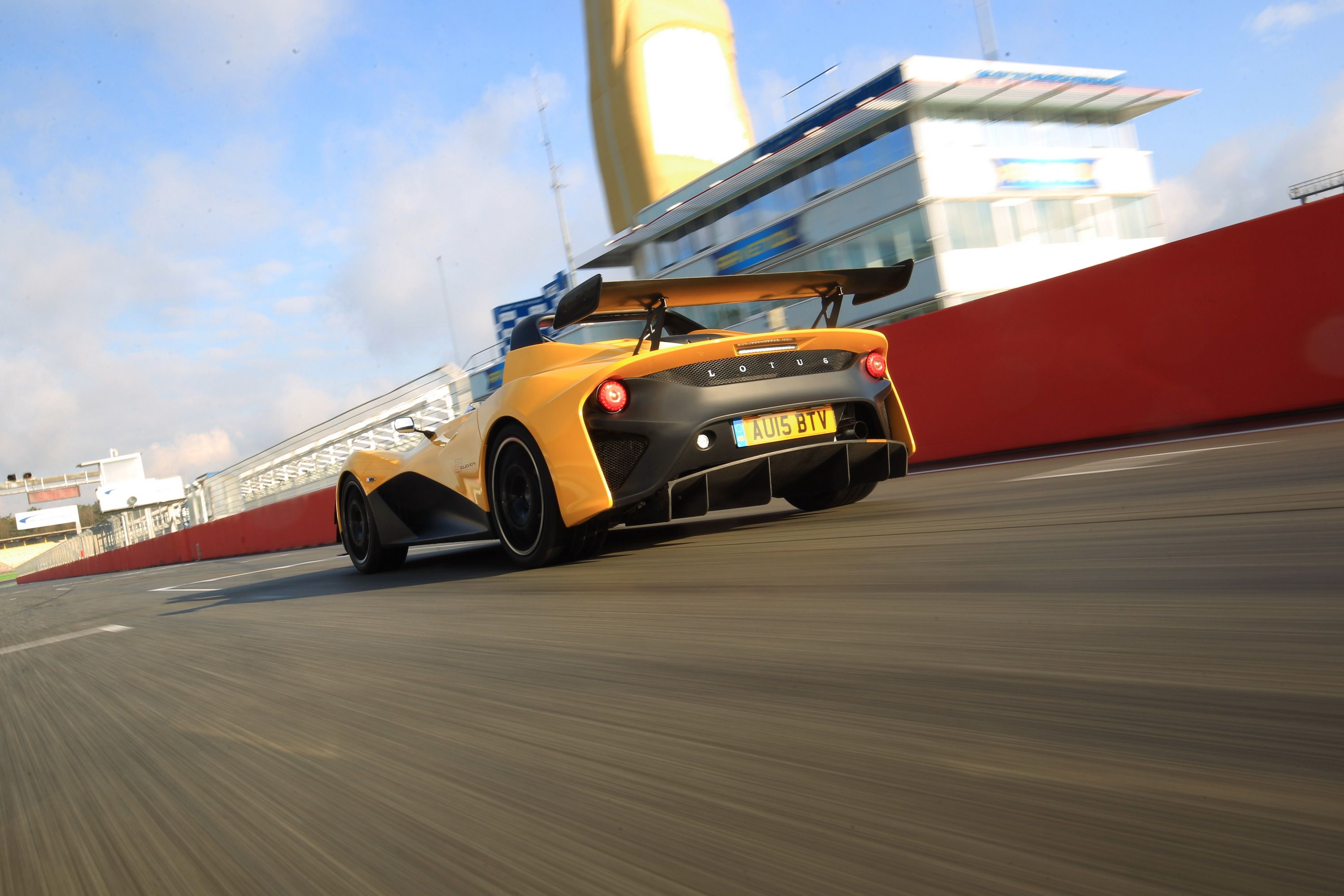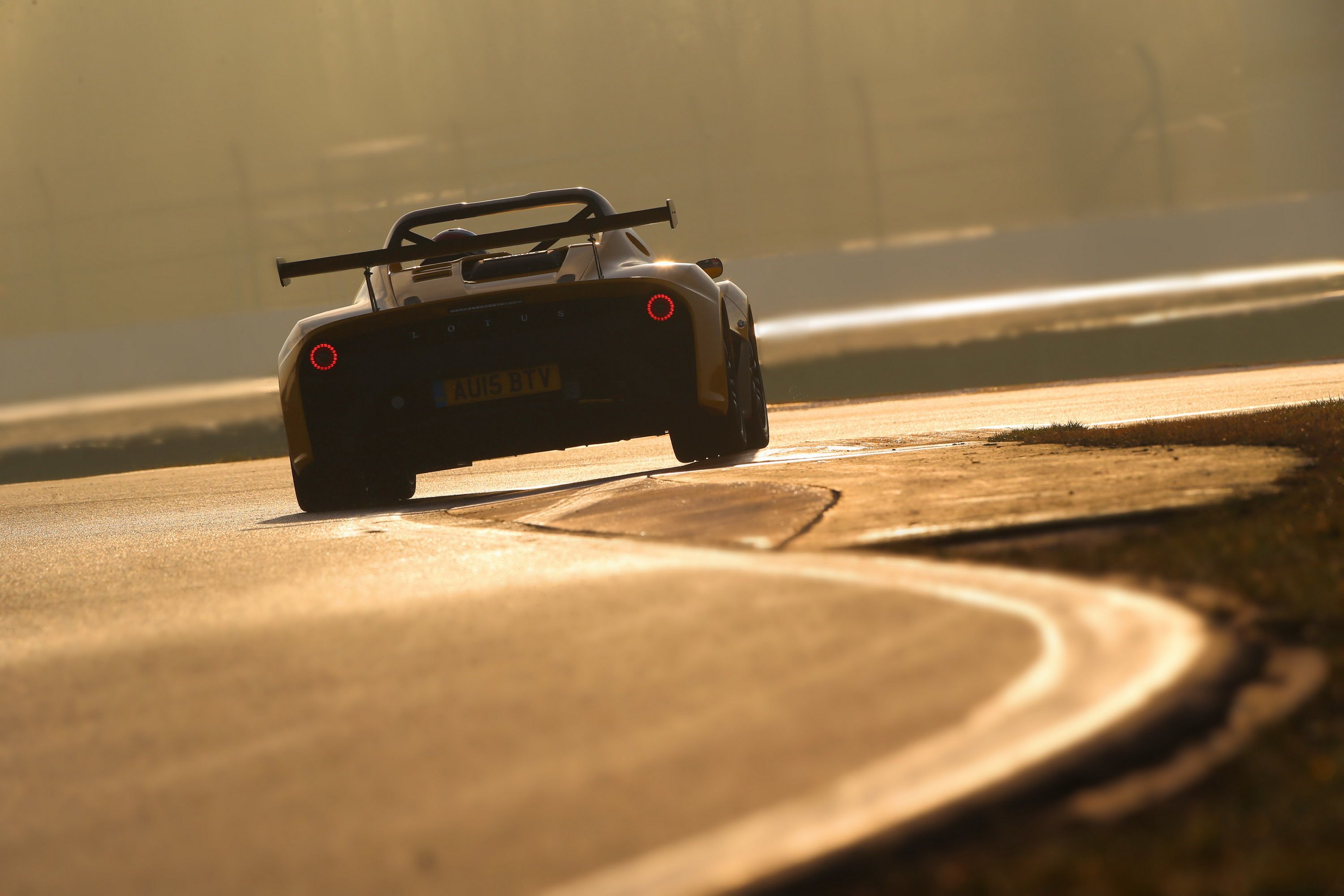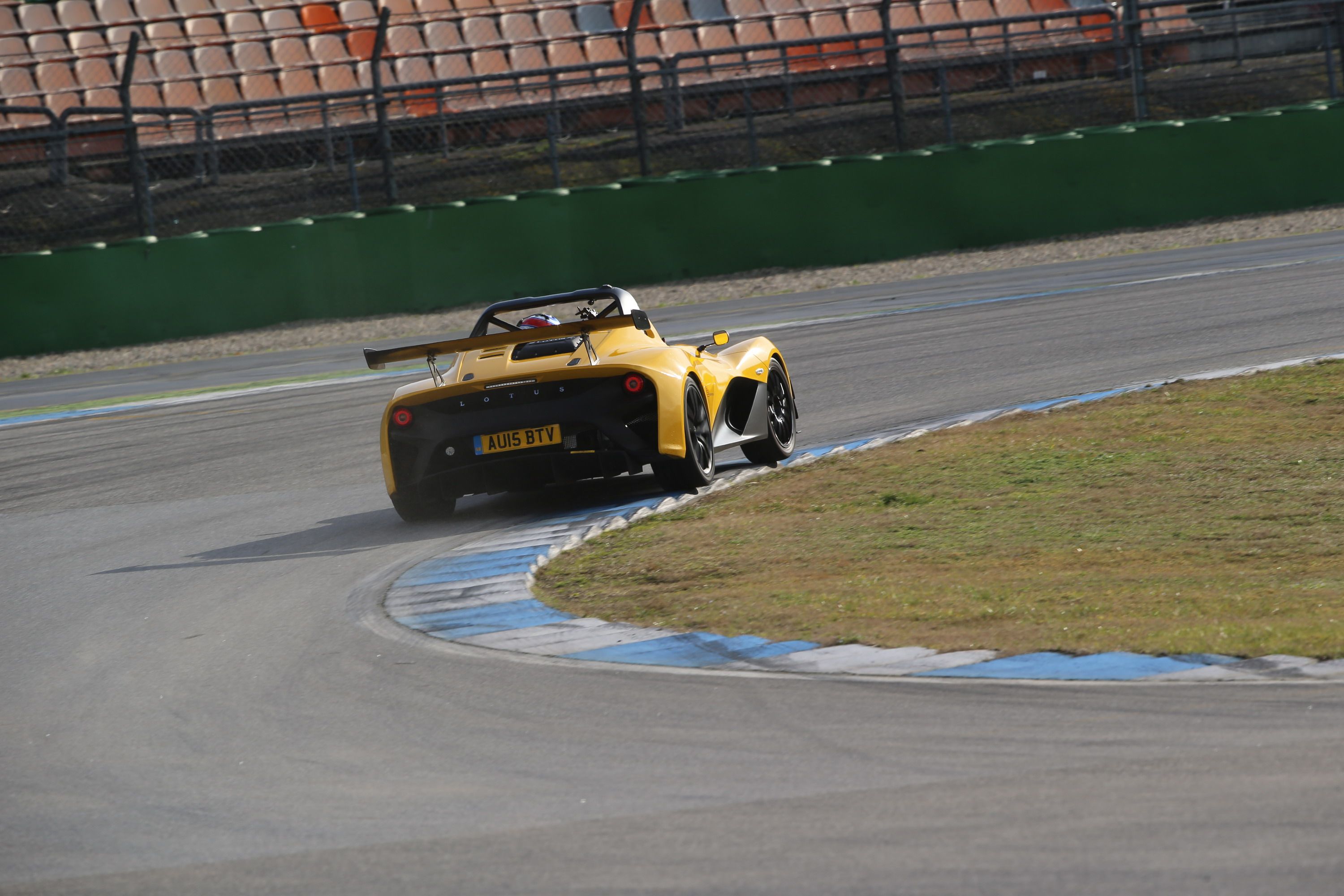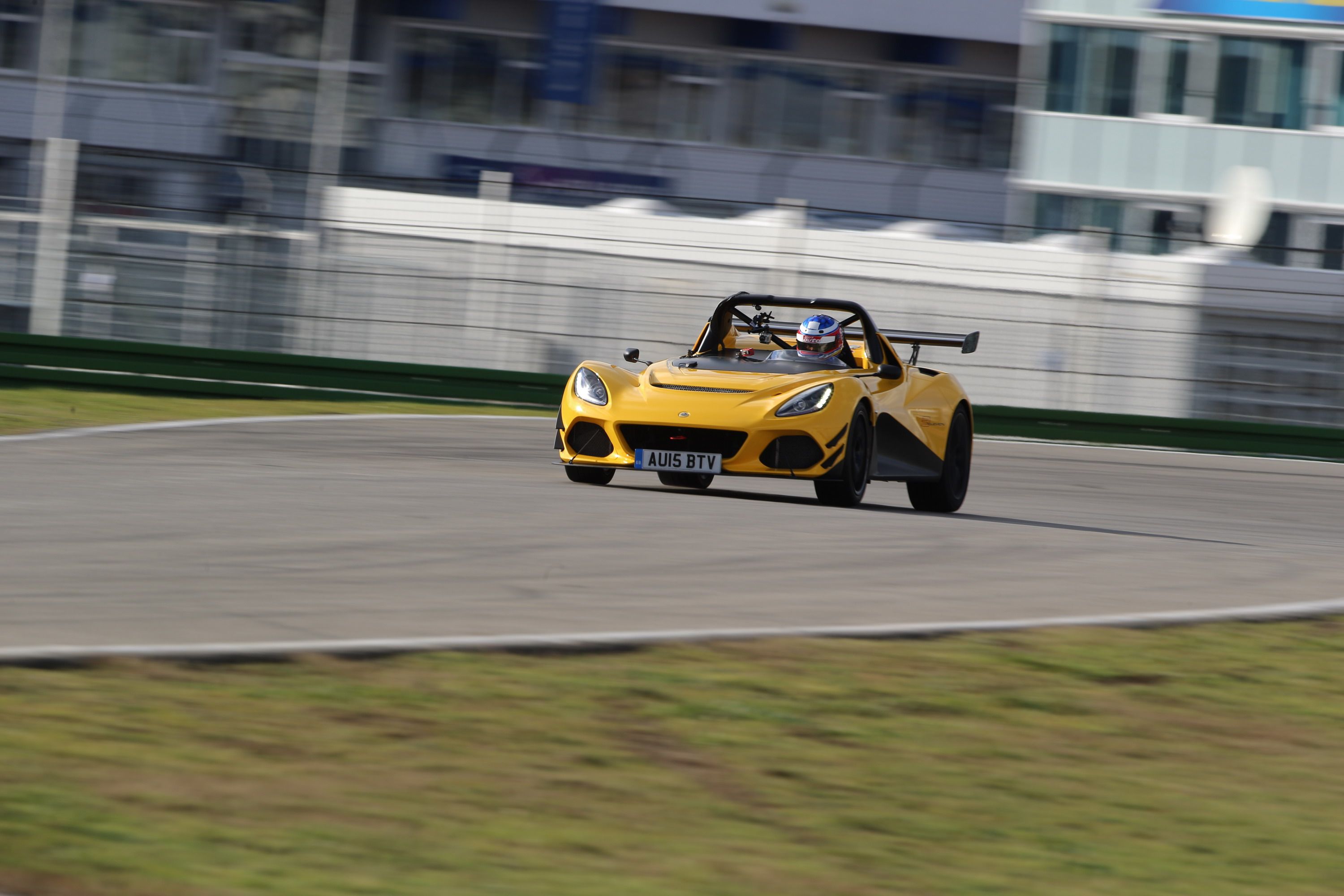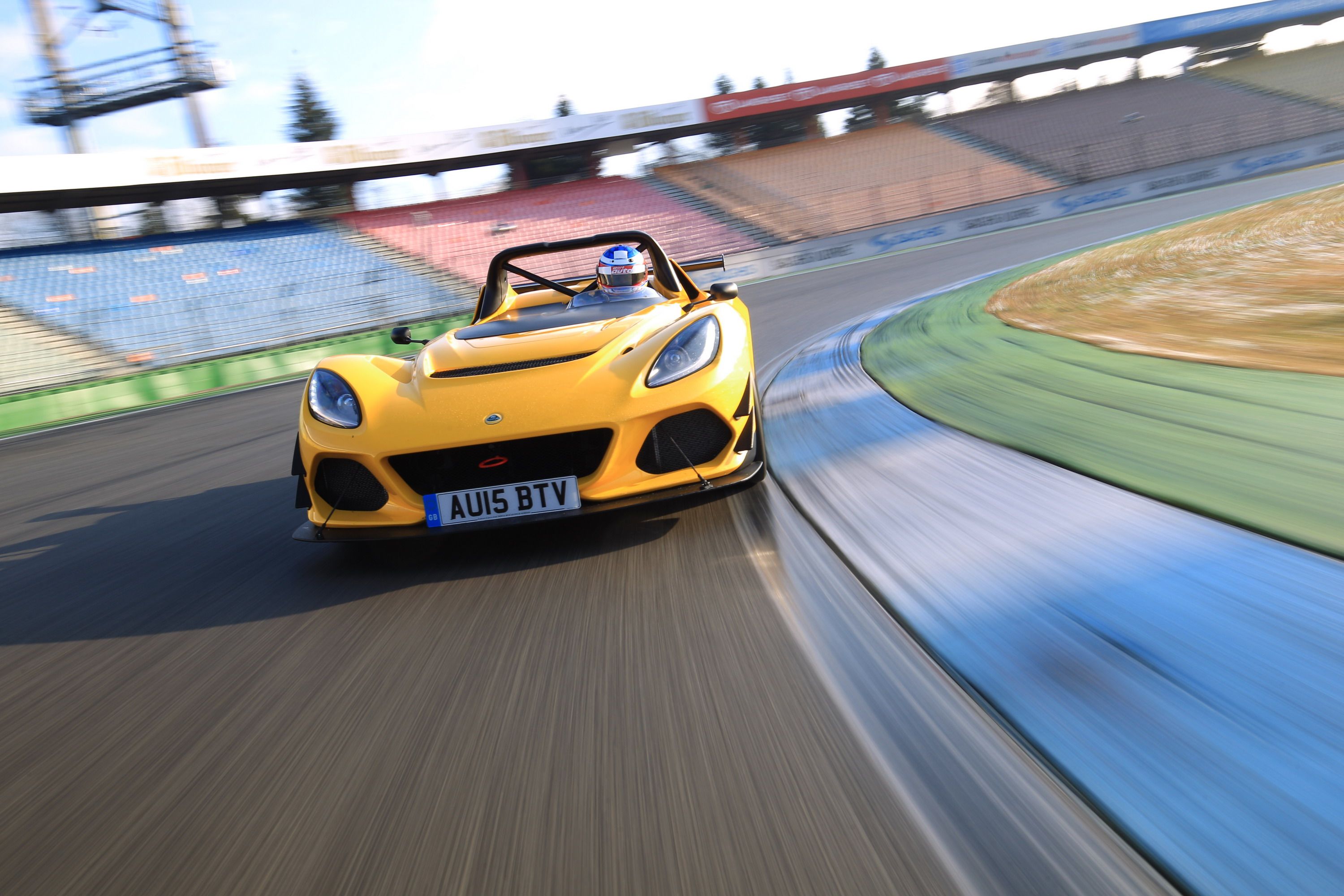Having launched the 2015 Lotus Elise S Cup in 2014 and the 2016 Lotus Evora 400 in 2015, Lotus->ke49 is slowly but surely heading toward stability under the guidance of Jean-Marc Gales. The Frenchman joined the company in May 2014, when the Brits were struggling to stay afloat with net losses at more than $250 million at the end of 2013. Now that the British brand is somewhat stable, Gales reportedly wants three new vehicles in dealerships, including an Evora Roadster, an SUV, and a successor to the 2-Eleven. And the latter was just introduced at the 2015 Goodwood Festival of Speed.
Dubbed 3-Eleven, the new sports car->ke506 follows in the footsteps of its predecessor in just about every respect. It sports the barchetta-style design and features a comprehensive aerodynamic kit that includes all the goodies usually seen on a hardcore track car, including a large front splitter and rear wing, as well as a race-spec diffuser.
What sets the 3-Eleven apart from its ancestor besides the updated styling is the significantly more powerful engine and the fact that it comes in two versions. The Brits will built models for both the road and the track. Both will feature the same powerplant, but the racing->ke447 variant will feature improved aerodynamics to help it go faster around the track. Lotus also aims to lap the Nurburgring->ke999 in only 7:09 with the 3-Eleven, which would make it the fifth quickest production car on the "Green Hell."
Updated 09/21/2016: Lotus took the 3-Eleven to the famous Nurburgring track. Hit "play" to watch how the sports car behaved on the track, having Nordschleife expert and professional racer Marc Basseng behind the wheel.
Continue reading to learn more about the Lotus 3-Eleven.
2016 Lotus 3-Eleven
- Make: Array
- Model: 2016 Lotus 3-Eleven
- Engine/Motor: V6
- Horsepower: 450
Exterior
Much like the 2007 Lotus 2-Eleven before it, the 3-Eleven is based on the lightest and smallest sports car in Lotus' current lineup. In this case, it's the 2012-2015 Lotus Exige S. The front fascia is the most recognizable feature coming from the Exige.->ke525 The bumper intakes are shaped in a similar way, while the headlamps are identical to the Exiges. However, the aero kit Lotus has designed for the 3-Eleven adds a larger splitter and reshaped fenders. The hood is also different, and because the 3-Eleven doesn't have a conventional windscreen, it's also longer.
The rear fascia, on the other hand, has very little in common with the Exige. The round taillights are seemingly the only part the two sports cars share. Both the bumper and vents are different, as well as the two-piece diffuser. The large exhaust pipe, however, is still positioned at the center. The 3-Eleven is equipped with a decklid spoiler, as well as a large wing.
When viewed from the side, the 3-Eleven is also different than the Exige S. Both the front and rear fenders, as well as the side skirts, have been redesigned for optimized aerodynamics. Above the waistline, you can see the rollover hoop and the nearly flat windscreen so commonly found on barchetta-style sports cars and racers. A set of multi-spoke, lightweight wheels wrapped in Michelin tires round off the performance package.
Lotus says the Race version features "a more aggressive aero kit" compared to the Road model, but no specifics were given.
Lastly, the show car is wrapped in a metallic shade of British Racing Green and the yellow found on Lotus' historic badge. I'm guessing customers will be able to order the 3-Eleven in a wider range of liveries.
Interior
The single photo released as of yet confirms that the 3-Eleven comes with a no-nonsense cockpit devoid of any convenience features.
Details as to what technology has gone into this car are scant, but the only picture available shows a digital display that enables the driver access to a range of parameters, including speed, rpm, gear, oil pressure and temperature, fuel, and many more.
In front of the screen there's a leather-wrapped, three-spoke Momo steering wheel with aluminum paddle shifters for the sequential gearbox, while the right side of the dash features a small panel with an engine start button and other controls.
The road-going 3-Eleven is also equipped with a sports seat, while the Race version features an FIA-approved seat with a six-point harness. Other than that, the 3-Eleven's cockpit appears to be an aluminum shell designed with pure racing->ke447 in mind. And that's just awesome!
Drivetrain
As speculated from the very beginning, the 3-Eleven is powered by a supercharged V-6 engine that’s likely based on the same 3.5-liter powerplant found in the Evora and Exige S. I say "likely" because Lotus hasn’t revealed displacement information. What’s important here is that the mill generates a whopping 460 horsepower in the Race version, which accounts for a massive 198-horsepower improvement over the most powerful iteration of the 2-Eleven. The Road variant, on the other hand, comes with 410 horses on tap.
Lotus claims all that power is enough to send the 3-Eleven Race flying from 0 to 60 mph in only 2.9 seconds. This figure not only makes it the quickest Lotus ever built, but also gives the 3-Eleven supercar-like sprints. Top speed is estimated at 180 mph for the Race version. Though less powerful, the Road version is also pretty fast, needing 3.3 seconds to hit 60 mph, to go with a top speed of 174 mph.
Lotus also unveiled that the Race variant of the 3-Eleven tips the scales at only 890 kg (1,962 pounds), offering a power-to-weight ratio 517 horsepower per tonne. The Road model weighs in at 925 kg (2,039 pounds), a fantastic figure for a 410-horsepower vehicle.
Prior to the unveiling, Jean-Marc Gales said that the 3-Eleven will lap the Nurburgring lap in 7:09 minutes, which is only a second slower than the 2015 Nissan GT-R Nismo. While the official attempt has yet to happen, Lotus did publish the 3-Eleven's benchmark on the challenging Hethel track, which stands at an astonishing 1:19.5 minutes for the Race version.
Drivetrain Specifications
|
Type |
V6 supercharged |
|
Output |
450 HP |
|
0-60 mph |
3.0 seconds |
|
Top Speed |
174 MPH (Race version)/180 MPH (Road Version) |
Prices
Besides being the quickest Lotus in history, the 3-Eleven is also the most expensive production car the brand has offered yet. The Road version will start from £82,500 (about $119,180) including VAT, while the Race variant will retail from £116,500 (around $168,284) including VAT. Total production will be limited to only 311 cars.
Lotus has yet to announce U.S. availability, but it did say that the Road model will only be offered in Europe and Asia, while the Race version will be sold globally. This means that if the 3-Eleven crosses the pond to North America, we will only get the more expensive variant.
UK Prices
|
Recommended Retail Price in GB Pounds inc. VAT (20%) |
Recommended Retail Price in GB Pounds exc. VAT |
|
|
3-Eleven Road |
£82,500 |
£68,750 |
|
3-Eleven Race |
£116,500 |
£97,083 |
|
Carbon Tonneau Cover (Road) |
£2,000 |
£1,667 |
|
Carbon Tonneau Cover (Race) |
£2,000 |
£1,667 |
|
Removable Steering Wheel (Road) |
£650 |
£542 |
|
Sports Passenger Seat and 4-point Harness (Road and Race) |
£1,200 |
£1,000 |
|
FIA Carbon Passenger Seat and 4-point Harness (Road and Race) |
£2,000 |
£1,667 |
|
FIA Carbon Driver Seat and 4-point Harness (Road) |
£800 |
£667 |
|
FIA Cage (Race) |
£3,000 |
£2,500 |
|
Fire Extinguisher and Battery Isolator (Road) |
£2,500 |
£2,083 |
|
2-Way Adjustable Dampers (Road) |
£2,500 |
£2,083 |
|
Adjustable Anti-Roll Bars (Road) |
£1,000 |
£833 |
|
Michelin Cup 2 Tyres (Road) |
£1,000 |
£833 |
|
Road to Track Logger and GPS Unit (Road and Race) |
£1,500 |
£1,250 |
|
Pro Analysis Upgrade to Data Logger (Road and Race) |
£1,300 |
£1,083 |
|
Metallic Paint (Road and Race) |
£950 |
£792 |
|
Black Pack (Road and Race) |
£1,000 |
£833 |
|
Colour Scheme 1: Metallic Green/Metallic Yellow Stripes (Road and Race) |
£3,500 |
£2,917 |
|
Colour Scheme 2: Metallic Black/Metallic Gold Stripes (Road and Race) |
£3,500 |
£2,917 |
|
Colour Scheme 3: Metallic Red//Metallic Gold Stripes (Road and Race) |
£3,500 |
£2,917 |
|
Colour Scheme 4: Matt Black/Phantom Black Stripes (Road and Race) |
£4,000 |
£3,333 |
Competition
2013 Caterham Seven 620R
When it comes to no-nonsense performance cars, the Caterham Seven->ke3209 is among the best the industry has to offer. Although it's been wearing a Caterham badge since 1973, the Seven was actually created by Lotus founder Colin Chapman in the late 1950s. Built around his "Simplify, then add lightness" ethos, the Seven has since been considered the embodiment of the brand's performance through low weight and simplicity.
In 2015, the Caterham Seven is available in many forms, the most extreme of which is the 620R. Weighing only 1,200 pounds and powered by a 2.0-liter Ford->ke31 Duratec engine rated at 311 horsepower and 219 pound-feet of torque, the 620R has the ability to hit 60 mph from a standing start in only 2.8 seconds, making it as quick as most million-dollar supercars. Unfortunately, the 620R's availability is restricted to the U.K. and Mainland Europe, where it can be had from £49,995 (around $75,000 as of 03/18/2015).
There is a bit of good news for those of you looking to purchase a Seven in the U.S. Caterham has recently reached an agreement with Superformance, who now sells the 360 and 480 models, the first Sevens specifically designed for U.S. consumption. The same Ford-sourced, 2.0-liter four-pot motivates the two, but while the 360 comes with 180 horsepower and 143 pound-feet on tap, the 480 benefits from 237 horses and 151 pound-feet. Pricing starts from $44,900 for the 360 and $52,900 for the 480, but the sticker doesn't include the drivetrain, which adds another $12K. Still better than not being able to import a Seven at all, right?
Continue reading our review here.
Ariel Atom
Although it lacks the heritage of the Caterham/Lotus Seven name, the Ariel Atom->ke564 is equally suited as a track-day vehicle. It’s less appealing for road use, but it's not like you buy one to drive it on your daily commute. The Atom features a much simpler exterior design, with a wrap-around roll cage replacing most of the body panels. The standard Atom comes with a Honda-sourced, 2.0-liter, four-cylinder engine rated at 245 horsepower and 155 pound-feet of torque and a six-speed, close-ratio manual gearbox. Reaching 60 mph from a standing start takes only three seconds.
Then there's the newly launched 2015 Ariel Atom 3S, which comes with added F1-style->ke190 pods, a full glass windscreen, and a larger, but still Honda-sourced,->ke34 2.4-liter engine that sends 365 turbocharged horses to the wheels. A new, race-spec, six-speed sequential gearbox built by Sadev enables the 3S to hit 60 mph only 2.8 seconds. The good news here is that, unlike other Atoms, the 3S is finally available in the U.S. Pricing is set at $89,975, which makes it the most expensive of the bunch.
Continue reading our review here.
Conclusion
Needless to say, the 3-Eleven looks ready to kick some arse in the sports car world and judging by the preliminary numbers, it should be able to outgun a couple of supercars too. With 450 horsepower at its disposal and a Nurburgring lap time of only 7:09 seconds, the 3-Eleven could become one of the most exciting track-prepped sports cars yet. In the meantime, it's Lotus’ first brand-new vehicle since the 2009 Evora and that's a very good reason to celebrate. The 3-Eleven might just help Lotus get back on track after many years of financial hardship. All I want is to see this beast delivers some quick laps on Europe's hottest race courses and, why not, maybe see it star in a one-make series.
Rendering
Update History
Updated 06/24/2016: The first Lotus 3-Eleven rolled out of the production line at the famous Hethel factory. The first 3-Eleven built features a matt and gloss Black colour scheme and will be on display at this years’ Goodwood Festival of Speed.
Updated 01/13/2016: Lotus announced full pricing details and drivetrain specifications for its new 3-Eleven.
Updated 10/09/2015: Lotus 3-Eleven just completed a two-week testing session at the Nurbrugring race track during which period a total of 2,000 kilometers (1,242 miles) were covered as part of a comprehensive test and development program. Check out Lotus' new video to see if the test was a success or not. Enjoy!
Updated 10/05/2015: Lotus dropped a new video sowing the new 3-Eleven in action at the Nürburgring Nordschleife circuit. Enjoy!
Updated 09/09/2015: Lotus announced that the new 3-Eleven just finished a two-week test session at the Nürburgring Nordschleife circuit, in which over 1,200 miles were covered. During the test sessions, the 3-Eleven achieved one of the fastest ever lap times around the Nürburgring: 7 minutes and 6 seconds -- which is even better than the company predicted. The time however, was obtained combining the quickest sector times achieved during the fastest 2 laps on the “Sport Auto” magazine lap configuration.
Updated 06/26/2015: Lotus dropped the official details on the new 3-Eleven, which will make its public debut this weekend at the 2015 Goodwood Festival of Speed.
Updated 02/30/2015: While all we have so far on the Lotus 3-Eleven is speculation, we decided to create a rendering of what we think the car will look like. We hope you like it.


